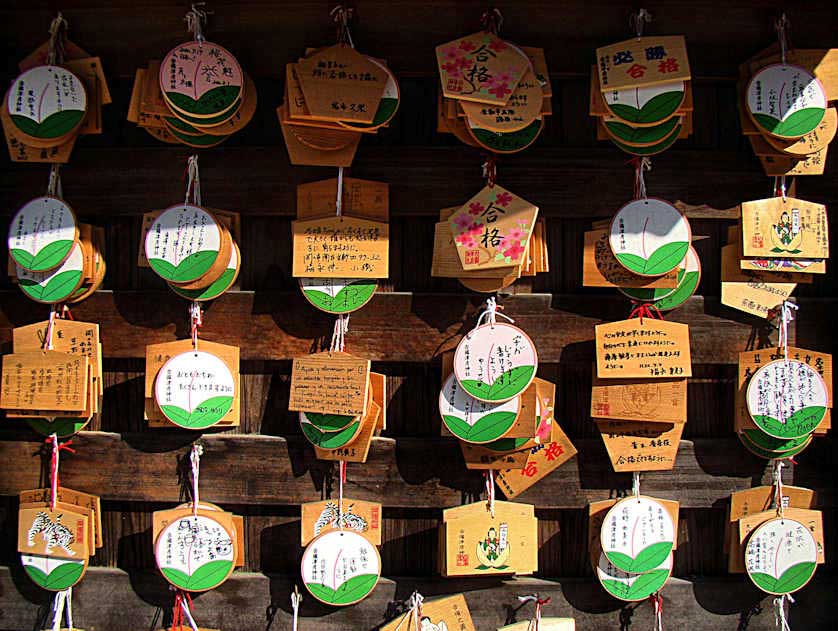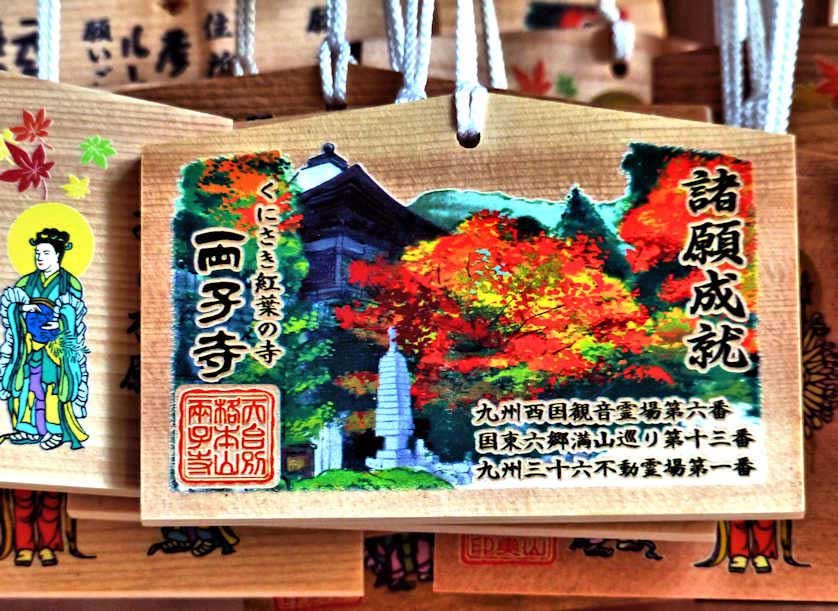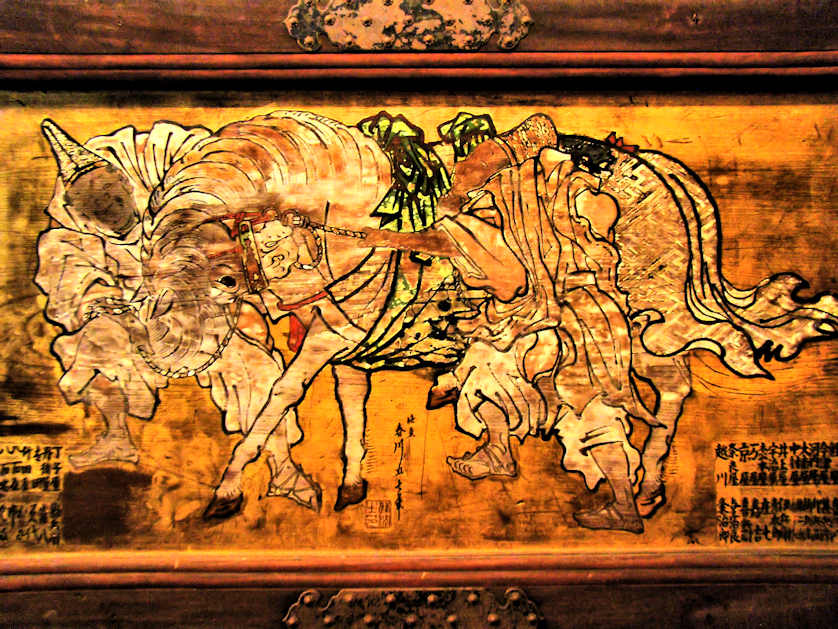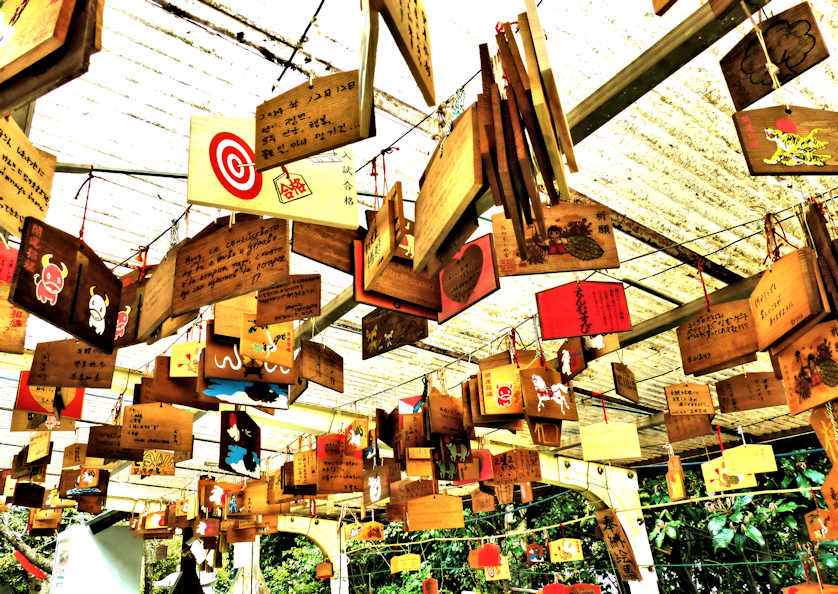Ramune ラムネ
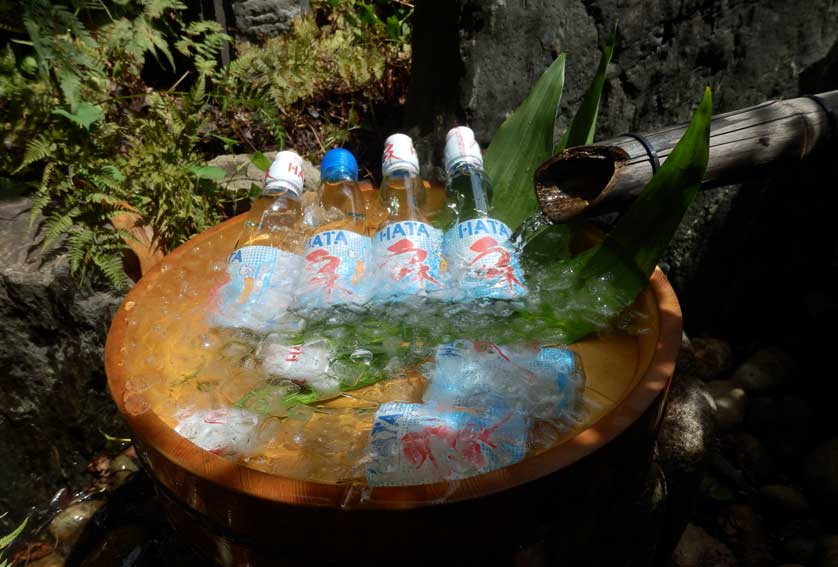 |
| Chilled ramune on a hot summer day |
Ramune is a refreshing, Japanese, carbonated drink sold in Codd-neck glass bottles. The drink is a popular staple at summer festivals across the country, it can also frequently be found in small shops near tourist destinations. The more obscure that tourist destination is, the more old-fashioned the shop is, the more likely you are to encounter Ramune.
In a country that sees highly-touted new releases of soft drinks every season by the large beverage companies, ramune survives as a sort of niche product, seen by many Japanese in quite nostalgic terms.
Most Japanese seem to have memories of drinking ramune during a summer trip to the countryside - and of breaking the bottle to retrieve the glass ball from the bottleneck to use it as a marble to play with.
Today's parents buy their children ramune to have them experience those same childhood moments, just the way their own parents did. Thus, ramune lives on through the generations - and children like to play with glass balls no matter what the newest electronic toy may be.
 |
| Ramune bottles |
Codd-neck Bottles
The word ramune is a Japanese adaptation of the English word lemonade. Ramune is however not just any lemonade. There are plenty of lemonades in Japan sold in cans and plastic bottles – they can however never be a ramune. To qualify as ramune the drink has to come in a Codd-neck bottle.
The Codd-neck bottle was patented in 1872 by British inventor Hiram Codd as an alternative to the use of cork as a bottle cap for carbonated drinks.
In a Codd-neck bottle, a glass ball, usually called a marble, is pressed against a rubber gasket in the narrow bottleneck close to the lid by the power of the carbonate in the liquid, tightly sealing the bottle by using the power mechanics working inside the bottle. You open the bottle by pushing the glass ball out of its position and into a neighboring chamber within the bottle. The tiny tool to do this comes with the bottle, sealed under the plastic wrapper covering the top.
This demands certain techniques that customers quickly learn, though often only after having a part of the drink shoot out in a gush or by the glass ball falling back into place once they raise the bottle to their mouths. That's all part of the fun, part of those precious childhood memories that make ramune a drink handed over from generation to generation.
Hiram Cobb also introduced the idea of bottle recycling. He started a bottle exchange in London where his bottles could be returned to the original manufacturer. Agents collecting the bottles were paid a fee.
What he didn't count on was the popularity of the glass marbles inside the bottles to children, the main customers of the carbonated soft drinks sold in his licensed bottles. They rather smashed the bottles and used the glass marbles for their own purposes. For playing, for trading.
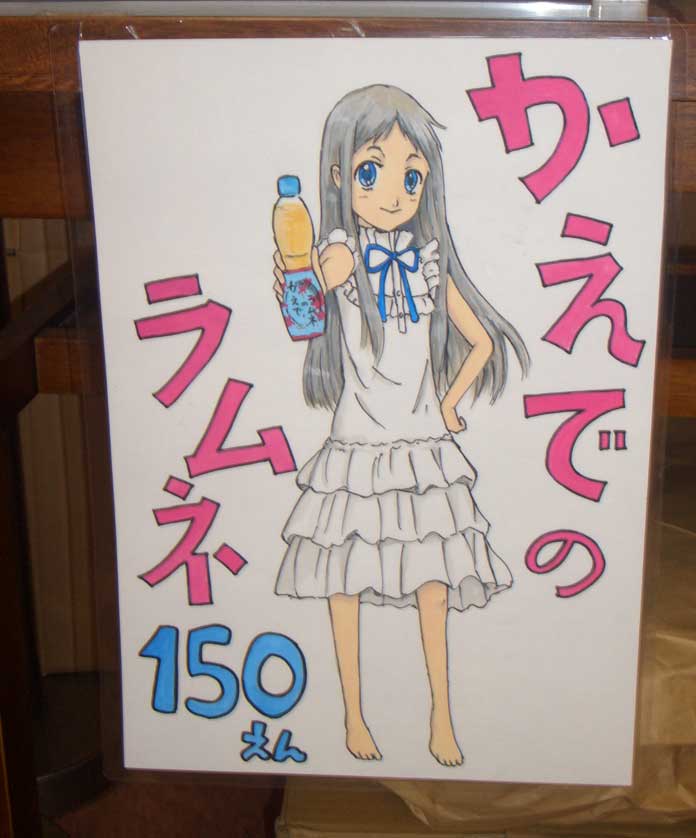 |
| Hand-drawn ramune poster at a store in Chichibu, Saitama |
Banta
Codd-neck bottles became the rage all over the British Empire but it was the Crown Colony of India where a soft drink was invented that was particularly suited to and, in fact, defined by the mechanics of the Codd-neck bottle: Banta.
The lemon or orange-flavored drink soon went from the posh Colonial clubs into the Indian street markets. Codd-neck bottles were produced by the millions in small glass works. Today. Banta is still one of India's most popular soft drinks.
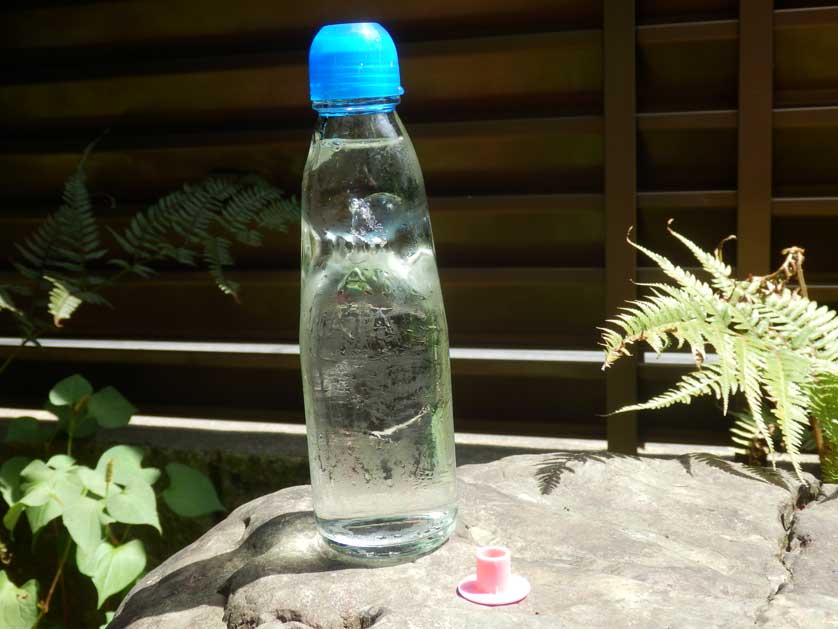 |
| Opened ramune bottle with bottle opener. The pushed-in glass ball can be seen in the upper part of the bottle |
History of Ramune
British pharmacist Alexander Cameron Sim (1840-1900) may have known about the success of Banta in India. In any case, shortly after his arrival in the newly-opened port town of Kobe, Japan, he devised his own invention, a lemon-based drink in a Codd-neck bottle that soon became known as ramune.
Introduced in 1884 to the foreign settlement, ramune soon became popular with the Japanese population after an article in the Tokyo Mainichi Shimbun praised the drink's preventative properties against cholera.
Cholera, an infectious disease caused by poor-quality drinking water, was a major concern at the time. Ramune, made from clean mountain water was seen as an easy alternative to drinking the questionable water of the wells within the big cities. As it contained no alcohol, it could also be used as a drink for small children.
Ramune Manufacturers
Today, the production of ramune is regulated by the Law Concerning Adjustment of Business Activities of Large Business Operators to Ensure Opportunities for Business Activities of Small and Medium Enterprises (SME Sector Adjustment Law), a law that also regulates the production of tofu and shochu, for example.
Major beverage companies are not allowed to engage in the production of ramune and have to leave the field to a variety of smaller businesses. Hata Kousen, based in Osaka, might be the most well-known of the ramune manufacturers active today.
Ramune comes in a very wide range of flavors though the most common is still the original lemon / lime flavor. Some people like to add a few drops of lemon juice to the drink - taking out some of its sweetness and adding more freshness.
Retrieving the Marble
In the old days, the rubber gasket at the lid was sealed to the glass bottle, necessitating the destruction of the bottle to retrieve the glass ball inside.
Today, that rubber gasket has been replaced by a plastic cap that can be unscrewed from the bottle. This makes it very easy to take the glass ball out. Just make sure to turn the cap to the right, in the opposite direction of common unscrewing. The marble then easily plops out of the bottle.
Codd-neck Bottles Today
While the Codd-neck bottle was a major invention of the late 19th century, in the course of the 20th century it was almost universally replaced by the much more convenient crown cork.
Very few beverages are still offered in Codd-neck bottles today. The two major drinks among them are India's Banta and Japan's ramune - which makes the bottles collectibles among some aficionados of vintage bottle designs.
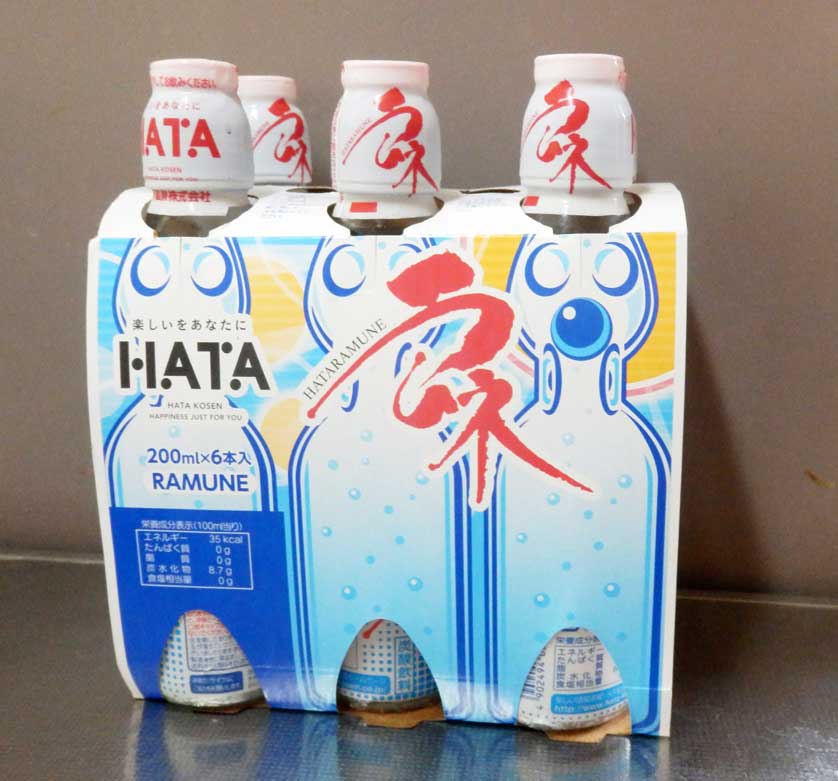 |
| A six-pack of Hata Ramune |
Purchase Ramune & A Range of Other Drinks From Japan
Purchase a range of Japanese health drinks from GoodsFromJapan.
Related
Furikake Tsukudani Rice Topping Kinshobai
Japanese Mortar & Pestle Suribachi & Surikogi
by Johannes Schonherr
© GoodsFromJapan.com




